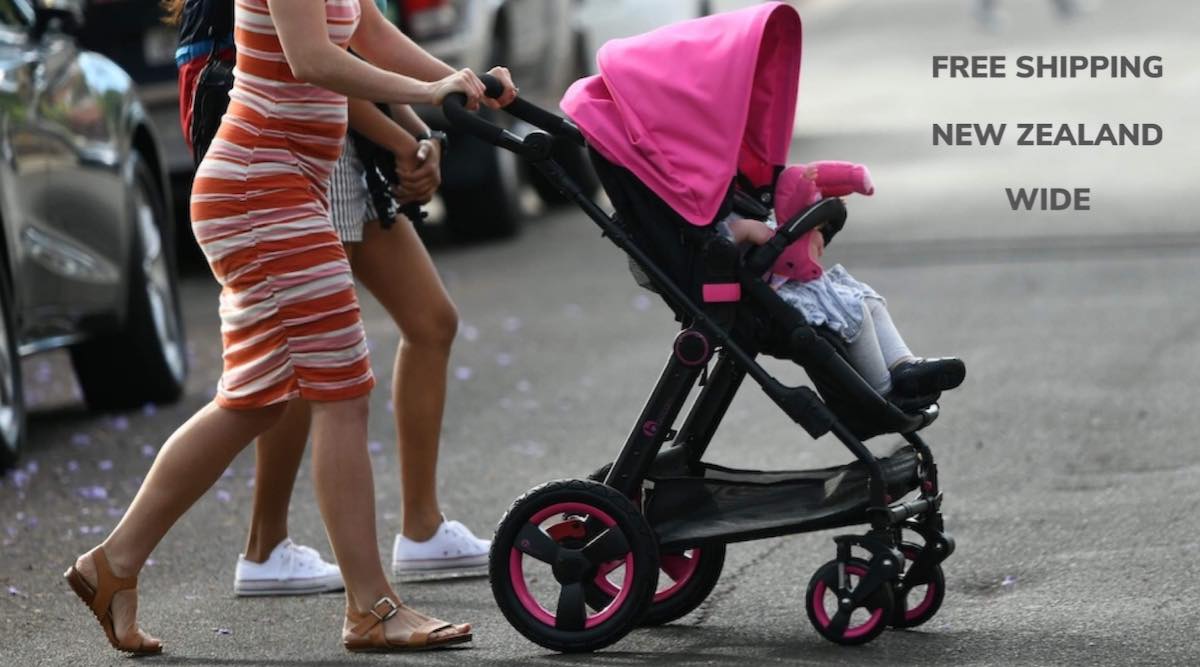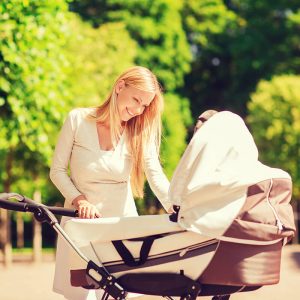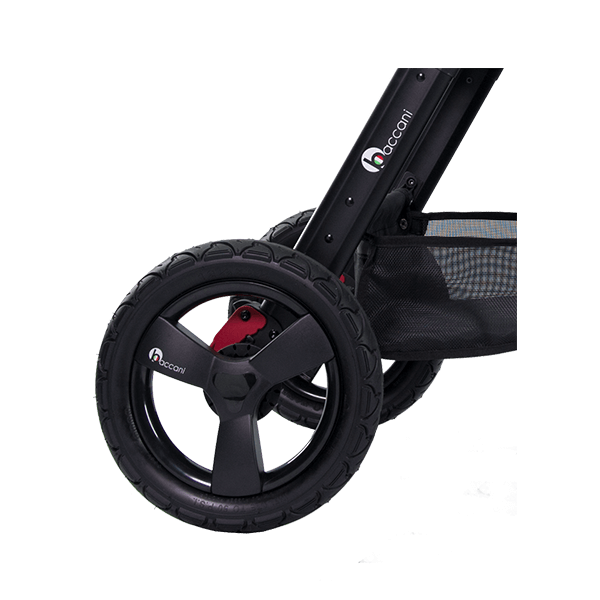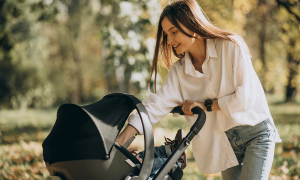
Like any other product in the consumer market, Strollers and Prams have developed and expanded through the years. These products have undergone profound structural, design, and engineering changes that have guaranteed a better consumer experience along with various technological advancements. New features installed in modern-day strollers cater to making your baby’s ride safer and more comfortable. In contrast, other features are specifically designed to meet the needs and improve the comfort of parents.
In the past, we have taken you through a comprehensive guide on how to choose the best prams and strollers for your little ones. Today, let us walk you through the specific safety features and security essentials that you should add to your checklist when purchasing the best stroller/pram imaginable.
-
Safety Standard Label
If you’re buying a new pram or stroller, the first thing is to check if it meets the mandatory New Zealand Standard AS/NZS 2088. Look for the New Zealand Standards label, which should be mandatorily placed on the product. If you are unsure, please ask the retailer for the necessary proof of safety.
-
Restraint System
When purchasing a stroller, make sure to choose one with a sturdy safety belt and a crotch strap. These two accessories keep your baby or a toddler from slipping as well as sliding out of the stroller and risking severe injury. Mostly, the safety belt and crotch strap are made out of a thick nylon webbing. According to Australia/New Zealand safety standards and ASTM safety standards, a crotch strap is mandatory when a waist strap is used.
When checking up the buckles installed on the harness, make sure that you purchase a stroller with buckles that are convenient for you to operate but would be difficult for your baby’s tiny hands to unfasten. It is better if you can shop with your baby so that you can place them in the pram/stroller. This allows you to check if the seat belt is strong, durable, and fits around your child so that it doesn’t cause them any discomfort.

In some strollers, the safety restraints are limited to waist and crotch straps. We do not recommend that you purchase a model of that caliber. However, you can be rest assured that most modern-day strollers in the market are equipped with an adjustable five-point harness that meets the required safety standards. A five-point harness, much like the safety harnesses found in car seats, have two straps going over the baby’s shoulders, two for the thighs, along with a crotch strap. This mechanism will quite effectively keep your baby from slipping, sliding out, or falling off. It mitigates their ability to climb out of the stroller whenever you need to divert your attention elsewhere. Apart from this, check if the straps are height-adjustable, ensuring a proper fit and if they too are anchored to the stroller securely.
-
Brake System
When testing your stroller out, pay a lot of attention to its parking brake and functionality. Its mechanism should be convenient for you to operate, and the brake should essentially lock two wheels. Having parking brakes operating through two wheels provides an added margin of security to your stroller.
The mechanism of a two-wheel parking brake may vary from product to product. Some brakes are activated with a single stroke by a bar that is installed in the rear of the stroller frame. In contrast, other brake systems require two actions, which need two foot-operated tabs that are installed above each rear wheel. Regardless of the applying mechanism, when the brakes are activated, the plastic cogs engage with the rear wheel’s sprockets and effectively bring the stroller to a halt.
In addition to the parking brakes, most strollers are equipped with hand-operated brakes similar to those installed on bicycles. If you use a jogging stroller, this mechanism comes in handy for you to quickly slow down when you’re cruising at a faster clip.
Remember! It’s all about your convenience. If the brake system hurts your foot when engaging and disengaging the mechanism, just avoid that product. Ideally, you should test it out using light shoes or bare feet. The same theory applies to the hand brakes. If it hurts, move on to the next. Simple as that!
-
Wheels
In current times, it’s almost hard to distinguish SUV wheels from those of their stroller counterparts. (A slight exaggeration, although you know what we mean) Equipped with larger and more rugged wheels, most modern-day strollers come cruising with an almost off-road appearance. However, this does provide a particular functional advantage; the larger the wheels, the easier it is to maneuver your stroller over rough surfaces, curbs, and other unfriendly terrains.
On the flip side of the coin, when you have larger wheels, this means more trunk space than you can afford when it comes to transporting your stroller in your vehicle. This may create an inconvenience based on your trunk capacity. Therefore, choose a stroller with wheels that suit your convenience in addition to its safety and functionality.

Your stroller’s front wheels may or may not swivel based on the type of stroller you buy. Most modern strollers come equipped with two wheels that swivel, making steering a lot more convenient. There are two positions that such front wheel’s feature:
- Full Swivel – For smooth surfaces
- Forward Facing Lock – For rough terrain
The mark of a well-engineered stroller has wheels that are aligned uniformly with the ground even when a baby is inside.
Certain three-wheeled strollers, however, may have a front wheel that doesn’t swivel. We do not recommend such a purchase unless you’re ready for a whole lot of elbow grease.
-
Leg Holes
The leg holes are an essential safety mechanism that should function properly in your stroller. Since your newborn or toddler cannot fully control their movements, the stroller should have leg holes that close, which would not allow an infant to slip through it. Most manufacturers install a mesh, fabric shields, or a hinged and molded footrest that raises and clamp over the leg holes, increasing its security. According to industry standards, a stroller containing leg holes that cannot be closed should not recline fully. This is meant to prevent its use with your newborn.
-
Canopy
As a multipurpose weather protection unit, a canopy is a mandatory accessory that should come with your stroller. Regardless of glaring sunlight, heavy winds, or rainfall, a canopy functions as a protective unit for your baby, who is safely tucked in.
Canopies are available in a wide range. From a simple fabric strung between two wires to semi-automated pull-down versions that can shield the entire front of the stroller, canopies are available to meet your needs as you wish.
There are reversible canopies that have the ability to protect your baby from the sun and wind regardless of the direction. Some canopies come with a peek-a-boo feature, a transparent plastic shield on top so that you can keep an eye out on your baby during your stroll time.
Some Important Safety Tips For You:
If your child falls asleep inside the pram unless you’re in a position to observe them at all times, it’s best that you move them to a cot. It is dangerous to leave your baby unattended in a pram or stroller when they are asleep. Most babies tend to wriggle around, and this may increase the risk of the pram tripping over. A severe mishap could even result in suffocation or strangulation.
 Annually, several children are hospitalized due to pram or stroller-related injuries. The primary cause of this is the risk of your pram tipping over, due to your baby wriggling while asleep or when they are unattended. Therefore, make sure that you always act with caution and vigilance. As an added safety measure, do not add a large amount of weight to your stroller in the form of bags and shopping items.
Annually, several children are hospitalized due to pram or stroller-related injuries. The primary cause of this is the risk of your pram tipping over, due to your baby wriggling while asleep or when they are unattended. Therefore, make sure that you always act with caution and vigilance. As an added safety measure, do not add a large amount of weight to your stroller in the form of bags and shopping items.
Physical activity is an essential part of your child’s growth. As a parent, you should be mindful about dividing your baby’s time to receive a good amount of rest as well as a good amount of activity. Do not let your baby remain idle inside a pram for extended periods, as this may hinder their growth.
So, there we have it! These are our expert tips on identifying and maintaining proper safety standards and keeping your baby secure during their stroll and pram times. Have another read if you are not sure about something. Make sure to religiously go through the New Zealand Standards for Prams and Strollers before making your purchase.
You can check it out via: https://www.standards.govt.nz/shop/asnzs-20882013/
